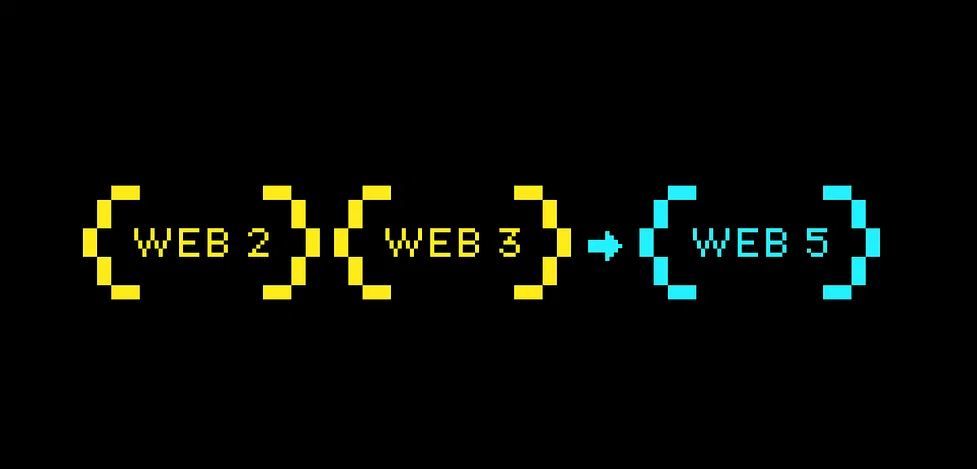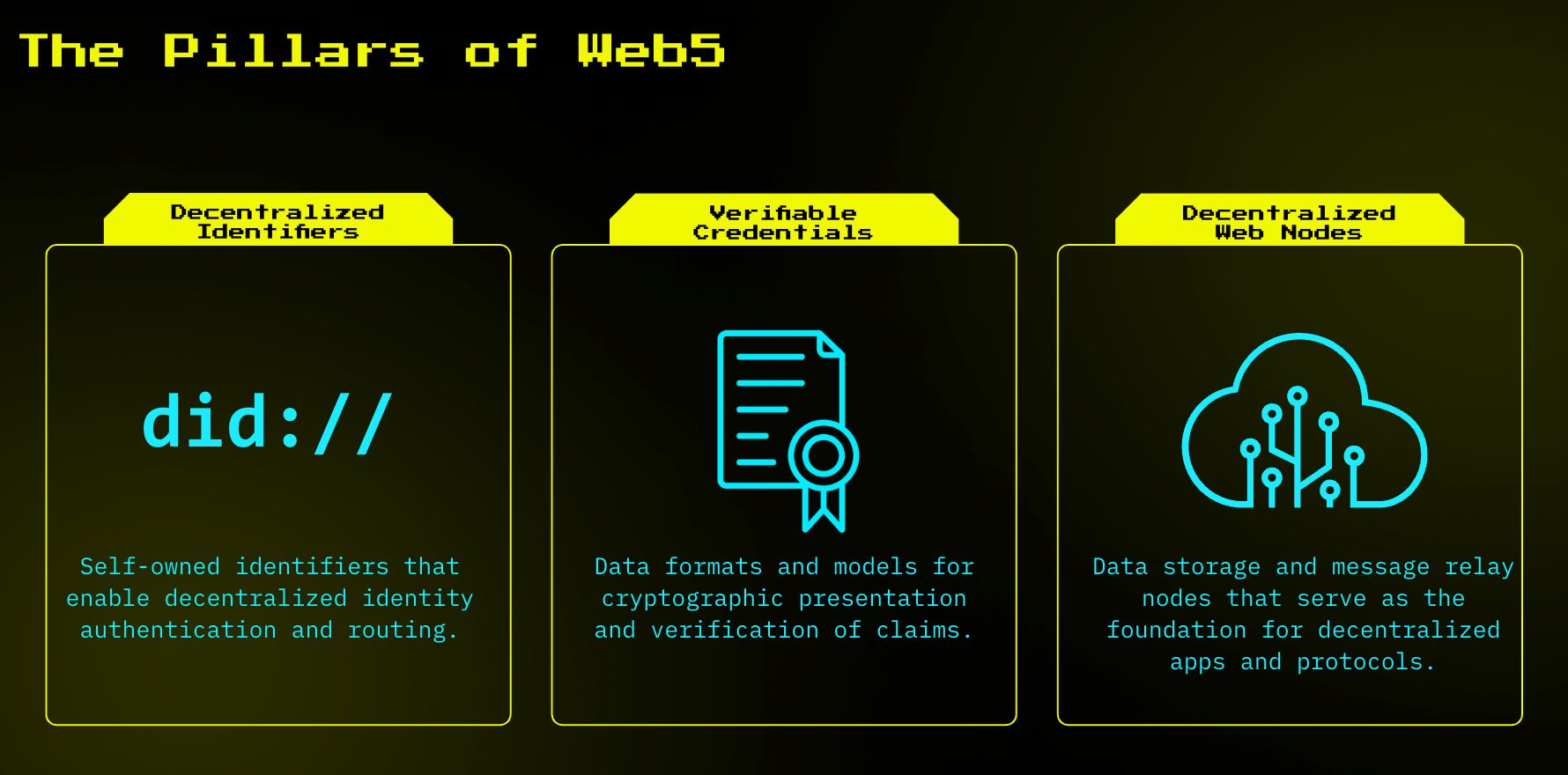Web5 Unveiled: Navigating the Next Frontier of Digital Evolution
 Gina Beki
Gina Beki
As the internet keeps evolving, ushering in waves of exciting technologies, navigating these uncharted territories may seem daunting. Exploring these new frontiers may seem challenging, but for the adventurous spirits, it's a thrilling journey. Picture this: Did you know that every second, approximately 6,000 tweets are sent, which symbolizes the rate at which our digital space changes? Now, imagine riding this wave of evolution into Web5—the next frontier of the internet. Here, possibilities are as limitless as our collective imagination. Enter Web5, a groundbreaking concept merging the user-centric approach of web2 with the decentralized promise of Web3. This convergence births a decentralized web platform, that grants users full control over their data and identity, hence marking the evolution towards a more user-empowered digital future.
Evolution of Web5
The evolution of the internet has been a remarkable journey, evolving through distinct phases that have shaped the way we connect, share information, and interact in the digital realm. Let's quickly talk about the stages:
Web 1.0: In this first version of the web mainly referred to as "the read-only Web", the internet was primarily static, offering limited interactivity.
Web 2.0: In this stage, the internet became dynamic and interactive. The central aspects of the online experience became tied around collaboration, communication, and community engagement.
Web 3.0: With the rise of blockchain technology, Web3 introduced decentralization a concept of ownership and control over one's data.
Web5.0: Now, Web5 stands on the brink of integrating user-centric design from Web2 and the decentralized principles of Web3.
The Pillars of Web5
Web5 comprises three main pillars that form a decentralized web platform based on open standards. These pillars include:

Decentralized Identifiers (DIDs):
DIDs are self-owned identifiers, eliminating reliance on centralized entities for authentication and representation.
A W3C standard, DIDs consist of a standardized structure, including a URI scheme identifier, DID method, and DID method-specific string.
DIDs can be anchored on decentralized networks like ION, running on top of Bitcoin, but anchoring on a blockchain is not mandatory.
DID Documents, stored off-chain, describe how to interact with the subject and include information like public keys and service endpoints.
Verifiable Credentials:
Verifiable Credentials, a W3C standard, collaborates with DIDs to enable trustless interactions.
These cryptographically signed credentials contain claims about a subject and can be presented for verification.
They facilitate sharing credentials across the web in a machine-readable format, allowing verifiers to trust claims without trusting the subject directly.
Decentralized Web Nodes (DWNs):
DWNs enable users to host and control their data independently of applications, breaking the reliance on centralized entities as data stores.
BlueSky is an example, a decentralized Twitter version where user data remains with the individual, not the application.
DWNs, not residing on the blockchain, can be hosted anywhere, supporting public and encrypted data storage.
They are associated with DIDs and listed in a DID document, allowing for decentralized data storage and relay.
These components collectively contribute to a user-centric, decentralized, and empowering digital experience, marking the evolution towards Web5.
Transformative Use Cases of Web5
These examples illustrate the diverse applications of Web5, showcasing its potential to reshape industries and empower individuals across various sectors:-
Decentralized Finance (DeFi):
Use Case: Web5 enables decentralized financial ecosystems where users have direct control over their assets, fostering trustless transactions without relying on traditional financial intermediaries.
Example: Smart contracts on Web5 facilitate peer-to-peer lending, automated trading, and transparent financial operations, revolutionizing the DeFi landscape.
Healthcare Data Management:
Use Case: Web5 empowers individuals to own and manage their health data securely. Patients control access, fostering interoperability among healthcare providers.
Example: A decentralized health platform on Web5 ensures patients decide who accesses their medical records, enhancing data privacy and patient-centric healthcare.
Supply Chain Transparency:
Use Case: Web5's decentralized structure brings transparency to supply chains, reducing fraud and ensuring traceability from production to end-users.
Example: Provenance tracking on Web5 ensures authenticity in products like organic food, reducing counterfeiting and providing consumers with reliable information.
Education Credentials:
Use Case: Web5 transforms credential verification, allowing individuals to control and share their academic achievements through secure, verifiable credentials.
Example: Employers can instantly verify job applicants' qualifications through cryptographic credentials stored on Web5, streamlining hiring processes.
Content Monetization:
Use Case: Web5 disrupts traditional content distribution models by allowing creators to monetize directly without intermediaries, ensuring fair compensation.
Example: Musicians can release music on decentralized platforms powered by Web5, receiving direct payments from listeners without the need for record labels.
Closing thoughts
As we conclude this journey through the evolution and potential of Web5, it's clear that we stand at the forefront of a digital revolution. The internet, once a static landscape, has evolved into a dynamic space defined by collaboration, interaction, and now, decentralization.
Web5 emerges as the culmination of this transformative journey, blending the user-centric ethos of Web2 with the decentralized promises of Web3. It beckons users into a new era where control over data and identity rests firmly in their hands. The pillars of Decentralized Identifiers, Verifiable Credentials, and Decentralized Web Nodes collectively lay the foundation for a more user-empowered digital experience.
Web5 promises a limitless landscape where possibilities mirror our collective imagination. From reshaping finance through DeFi to empowering individuals in healthcare and ensuring transparency in supply chains, Web5 is not just an evolution; it's a revolution.
As we navigate this uncharted territory, let's embrace the potential of Web5 to reshape industries and redefine our digital experiences. The journey doesn't end here; it's an ongoing exploration into the boundless possibilities of a decentralized, user-centric future. Stay tuned, for the next chapter of the internet's evolution awaits, and Web5 is our guiding star into this brave new digital world.
Here are some insightful articles that greatly contributed to the depth of this piece. I hope you find them useful. Happy reading!
Subscribe to my newsletter
Read articles from Gina Beki directly inside your inbox. Subscribe to the newsletter, and don't miss out.
Written by
